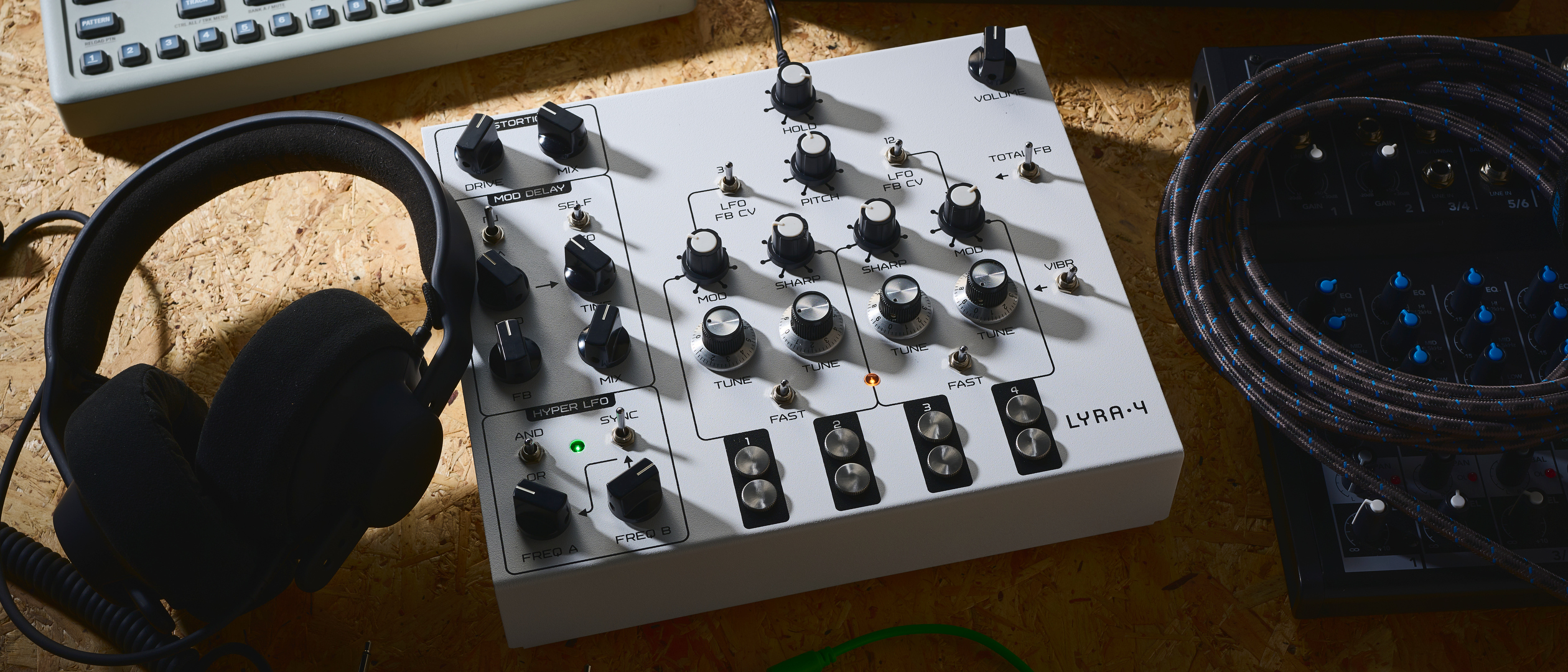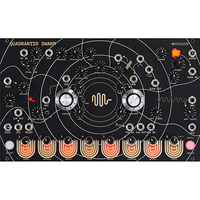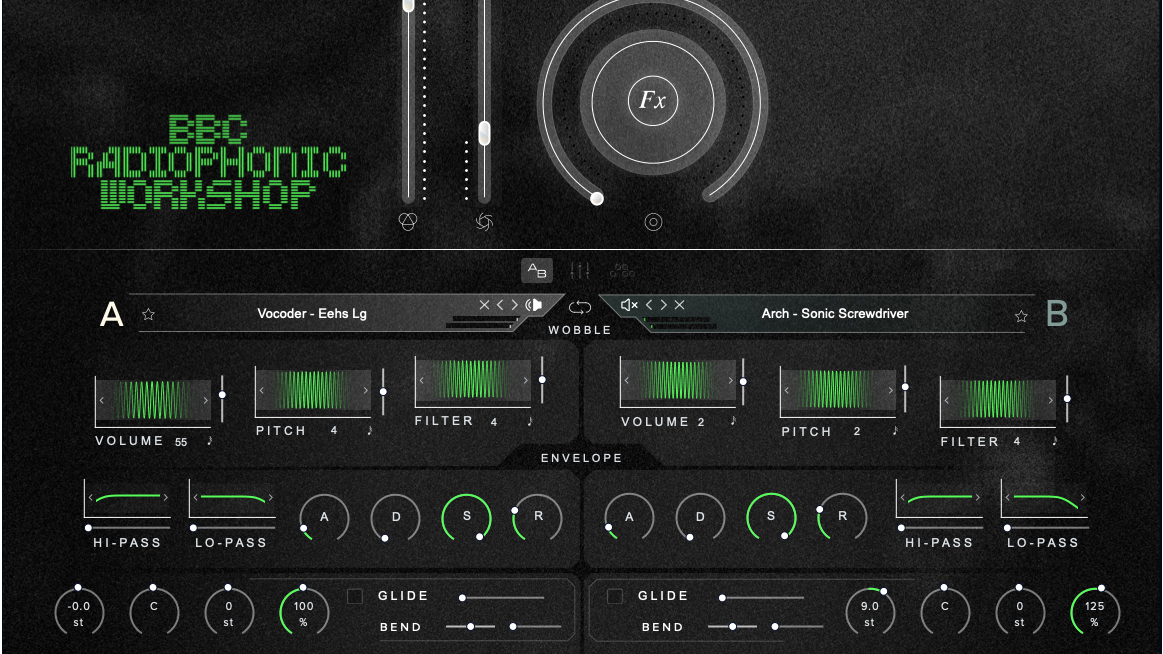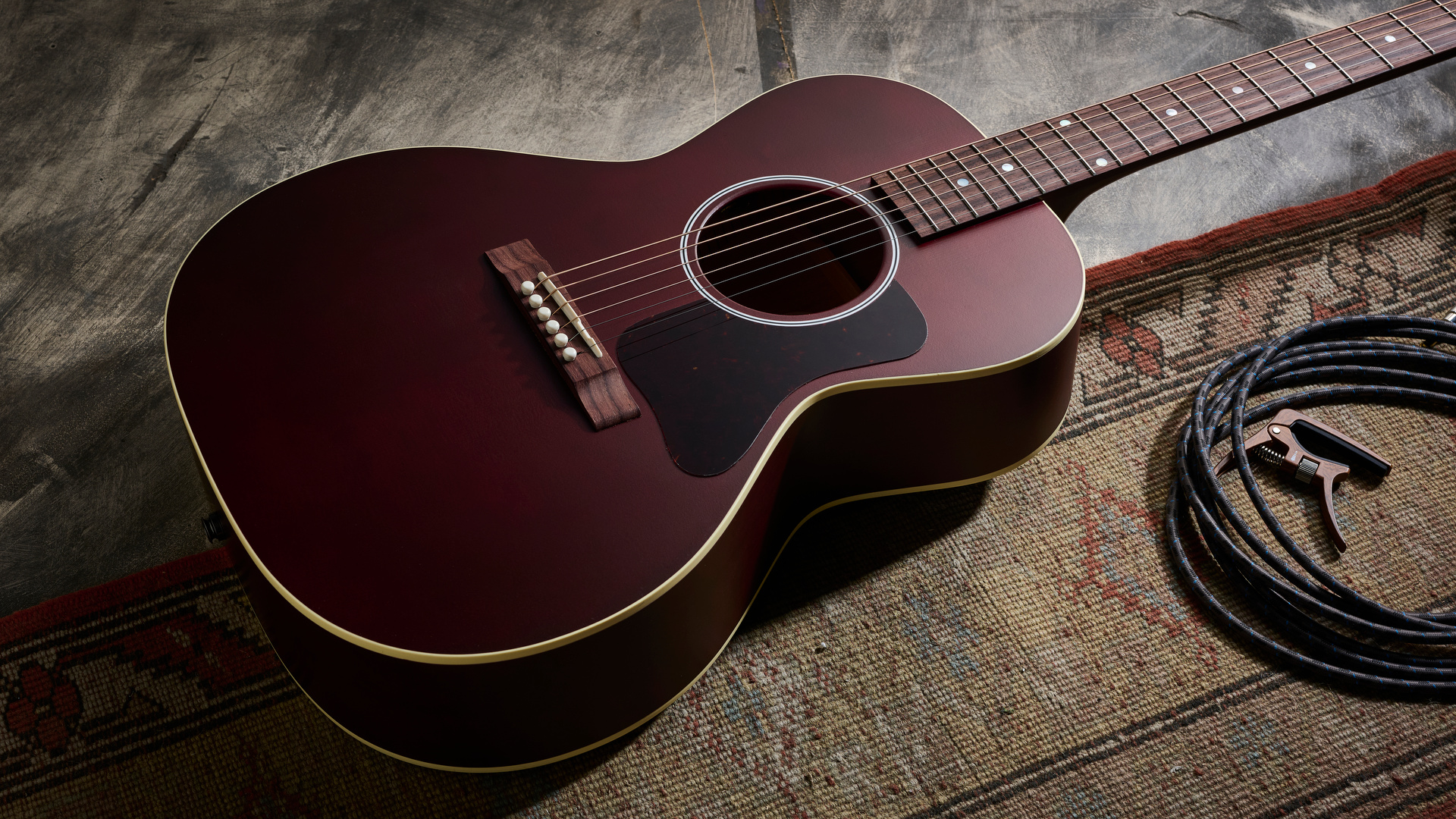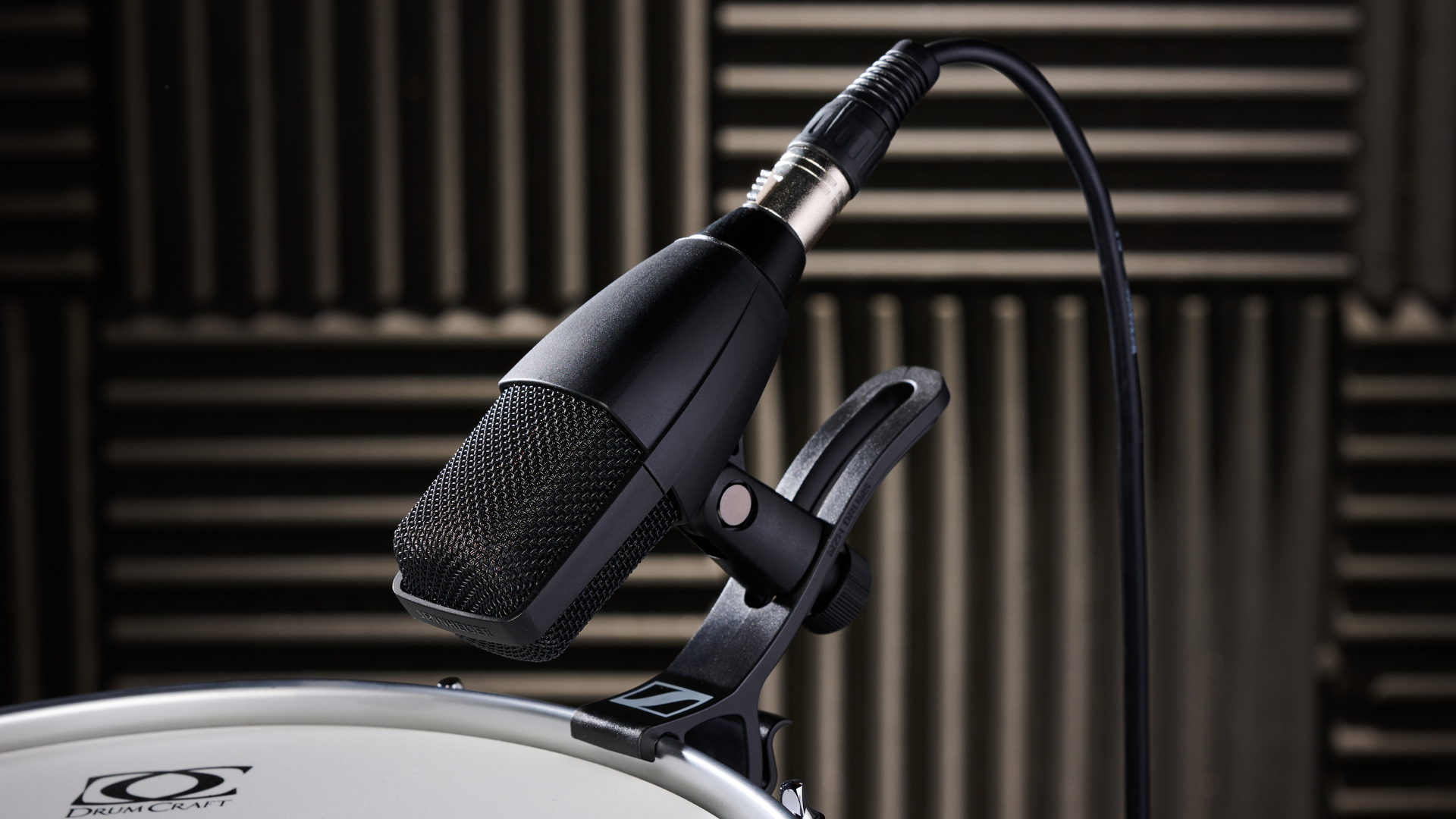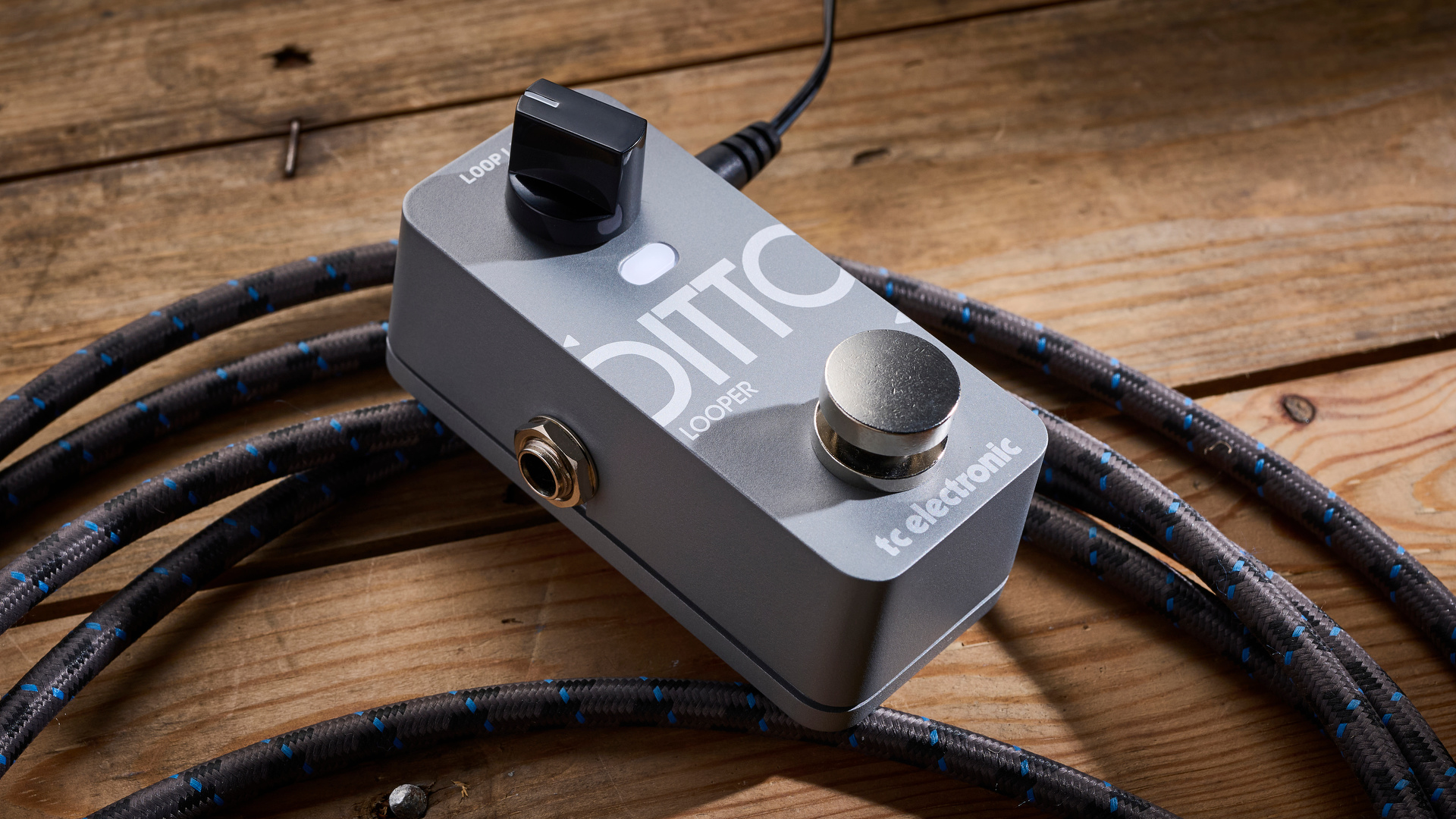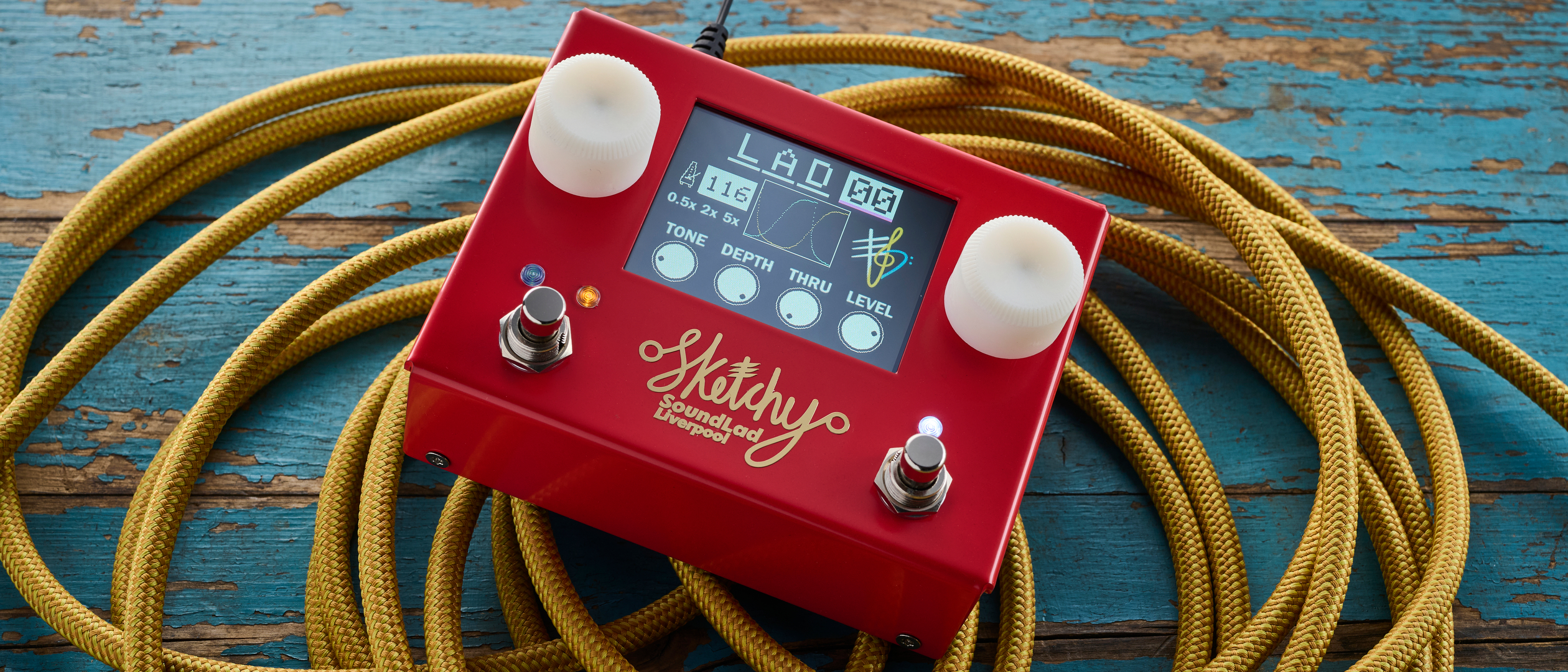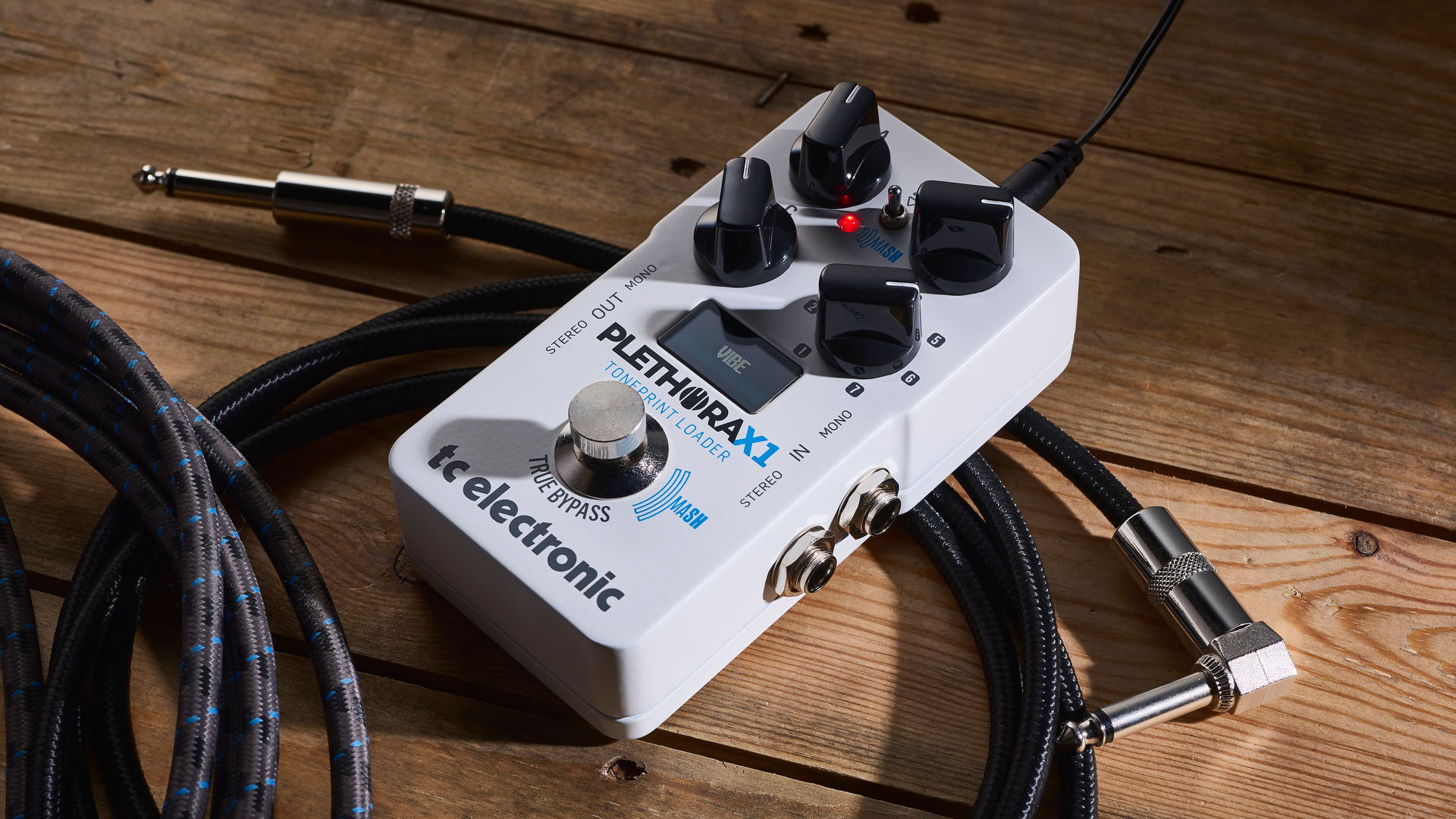MusicRadar Verdict
Like other Soma synths, the Lyra-4 is utterly unique and certainly won’t to be to everyone’s tastes, but if you enjoy oddball sound design, there’s tons of depth to explore here
Pros
- +
Unique workflow that’s fantastic for experimental timbres and weird feedback loops
- +
The cheapest and most convenient entry point into Soma’s unique synth line
- +
Powerful LFO and gnarly effects are great fun
Cons
- -
Not really suitable for creating melodic synth parts
- -
Limited sync and external control options
MusicRadar's got your back
What is it?
The brainchild of company founder Vlad Kreimer, Soma Laboratory has become known for its esoteric electronic instruments. These include Terra, a conceptual synth built into wooden housing to resemble a tree stump, the Theremin-like Flux, which is controlled using multi-polar magnetic sensors, and Messiever, described as an ‘irrational’ radio receiver.
Soma’s best known instruments are those derived from the company’s original breakthrough release, the Lyra-8. The Lyra synths are described as ‘organismic’ instruments, due to the way their design is influenced by the behaviour of living organisms. Their designs are based on individual components that are fairly straightforward, but which interact in unusual and often unpredictable ways.
Alongside the flagship Lyra-8, these general principles have trickled down to the Pulsar-32 drum machine as well as the more compact Lyra-4, which has recently been reissued.
Pricing
- Full price: €360 (excl. taxes)
While it works well on its own, Lyra-4 also pairs up with another Lyra-4, delivering the same sonic power but in stereo.
Whether you want to run solo or as a pair, then Soma has you covered with cases for both single and dual Lyra-4s. Plus, there's also the option of buying a plastic cover
• Soft case (€45)
• Soft case Duo (€60)
• Plastic cover (€45)
All prices exclude tax

Performance
At a very basic level, the Lyra-4 is essentially half a Lyra-8. It’s based around four of the same analogue voices as its bigger sibling, which are arranged in pairs allowing for various forms of audio-rate modulation.
These voices are loosely based around the tone generators found in vintage electric organs, and are controlled by a set of parameters that deviate somewhat from the controls of a standard analogue VCO.
This begins with how each voice is triggered. Rather than use a traditional keyboard, sequencer or MIDI input, the Lyra-4 is triggered using four sensors, each of which consists of two contact points. Placing a finger – or any other conductive material – across these will complete a circuit that triggers the associated voice.
Each sensor triggers an envelope that will respond to the speed and pressure applied to the sensor. A lighter touch will result in a slower attack and less velocity, while more forceful presses result in stronger signal from the triggered voice. These sensors can also be influenced by moisture, meaning they may respond in unexpected ways depending on the conditions the instrument is used in.
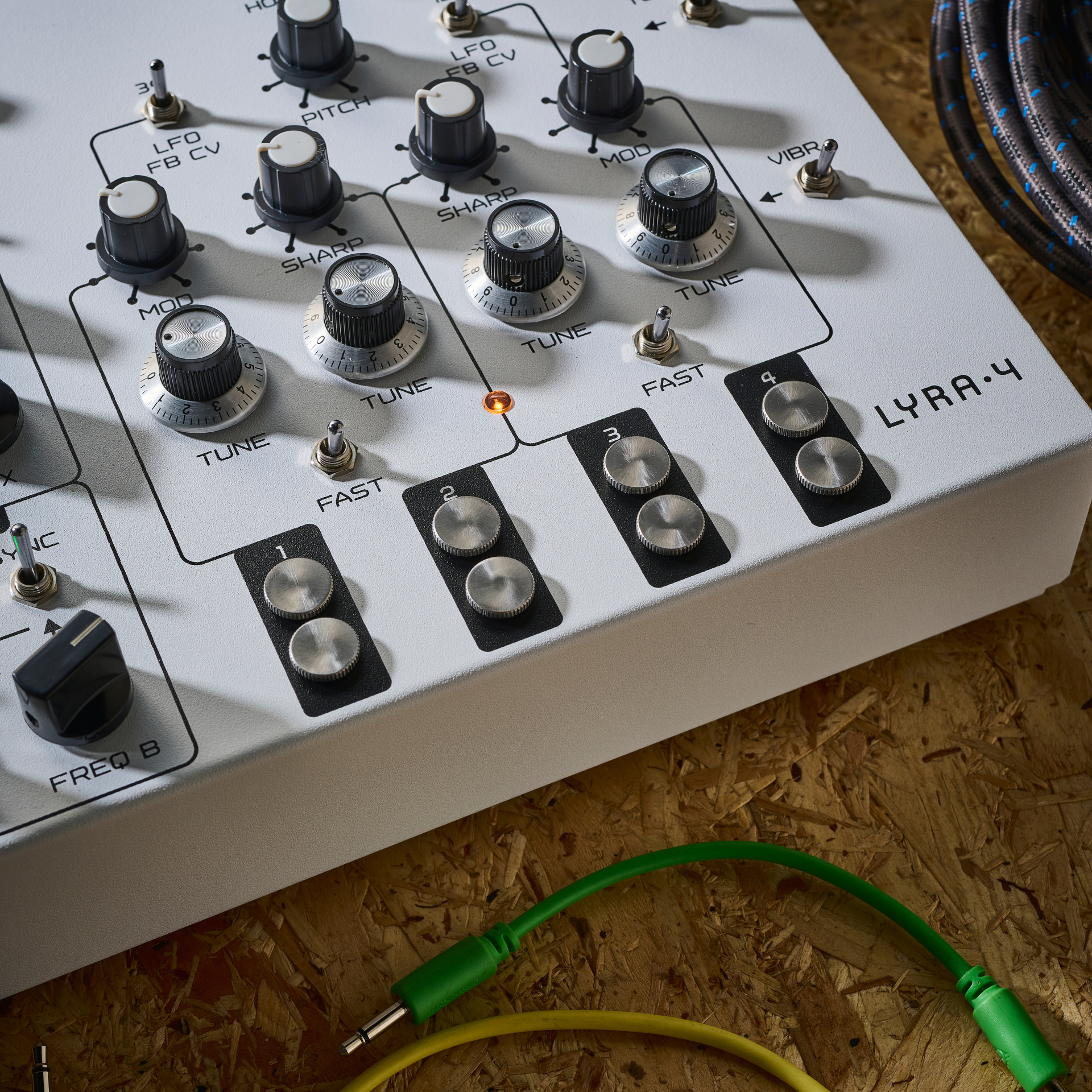
Above the sensors are a pair of switches labelled Fast. Each pair of voices shares one of these, which is used to alter the response of the envelopes for those voices. When engaged, the voices have a shorter release time. These work in conjunction with the global Hold control, placed at the top of the unit, which is used to open the envelopes of all voices simultaneously. At lower levels it acts like a release control, but creates an always-on drone mode when raised to a higher level.
Notably, these sensors do nothing to control the pitch of each voice. Instead, pitch is set using individual tuning dials for each voice, in combination with a global Pitch control, which alters the pitch for the whole instrument while maintaining the relative intervals between voices.
The first two voices have a lower range than the latter too, meaning they’re more adept at bass frequencies. The most intuitive way to use the Lyra-4 as a melodic tool is to tune these four voices to different note intervals, essentially creating a four note chord or four points in a scale that can then be triggered using the sensor.
Due to the experimental nature of the synth, these voices aren’t quantised to the chromatic scale and hence can be used for microtonal and non-western tuning systems.
These manual pitch controls are only half the story when it comes to creating sounds with the Lyra-4 though. A key part of the synth’s character comes from the various sources that can be used to modulate these voices.
The voices are arranged in pairs, which share a modulation control, increasing which will dial in modulation of the frequency of those two oscillators. A switch placed above each pair selects the source of this modulation.
In the upper positions, these switches put the Lyra into FM mode, creating a pair of cross-modulation loops where the frequency of the voices are modulated by one another. This modulation happens post-amp envelope, as it would with an FM operator, meaning the level modulation decreases as each voice’s amp decays.
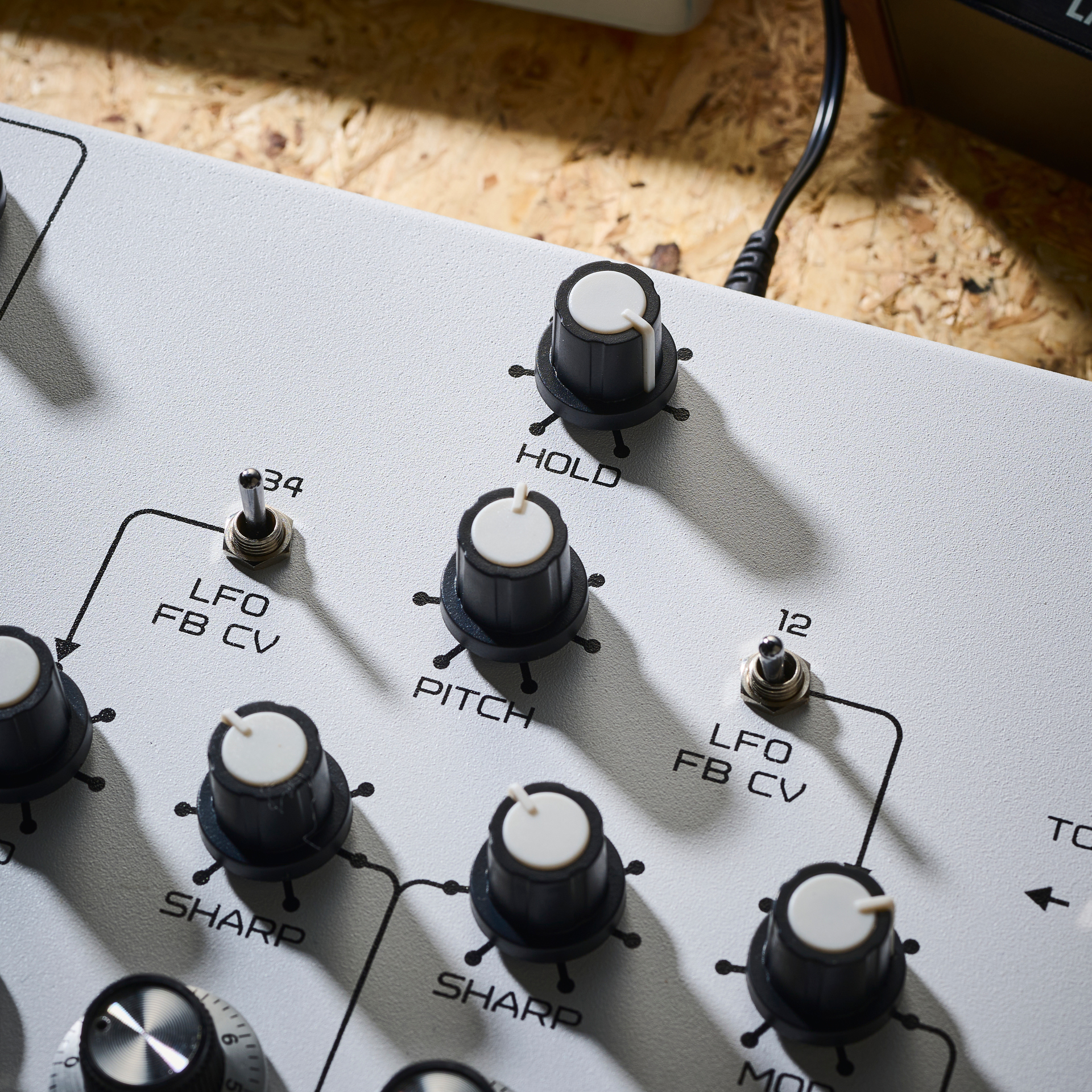
While it takes its cues from the four-operator FM of synths like the DX7, the results here are far less melodically precise and predictable. With FM engaged for all voices, each new touch of the trigger sensors will create weird textural and atonal shifts, particularly evident in the lower frequencies. With the Mod dials all the way up, the routing creates a sort of self-oscillating feedback loop that can create some fascinating modulated drones.
With the modulation selector switches in their lower position, modulation comes from a master modulation source. This can come from one of two places, depending on the position of the Total FB switch. With this disengaged, the Lyra-4’s modulation comes from its Hyper LFO – more on this shortly – but with Total FB engaged the synth’s master output becomes the modulation source, essentially creating a massive feedback loop.
Each voice pair also shares a Sharp parameter. This alters the waveshape created by the voices, essentially morphing from a sine to a square wave. The effect of this, though, is to introduce more high frequency harmonics into the output, so its result is similar to raising the cutoff frequency of a low-pass filter.
The voices share a single vibrato switch too, which engages vibrato across all four voices, although each has its own modulation source, so the vibrato rate differs across the four voices.
It’s worth noting that the Lyra-4 also has a rear panel CV input that allows for the pitch of the voices to be modulated from an external source. While it is possible to hook up an external sequencer or CV controller to this in order to create patterns or play the synth, it’s worth noting that the input is treated as a modulation source and doesn’t adhere to the 1V/Oct or Hz/V formats used for pitch by other analogue hardware.
All of which is to say, if you’re looking for a hardware synth to play precise music lines or generate melodic patterns, this is not it. What the Lyra-4 really excels at, however, is unique modulated timbres, atonal drones and microtonal sequences that seem to reinvent themselves each time you dare to touch the synth.
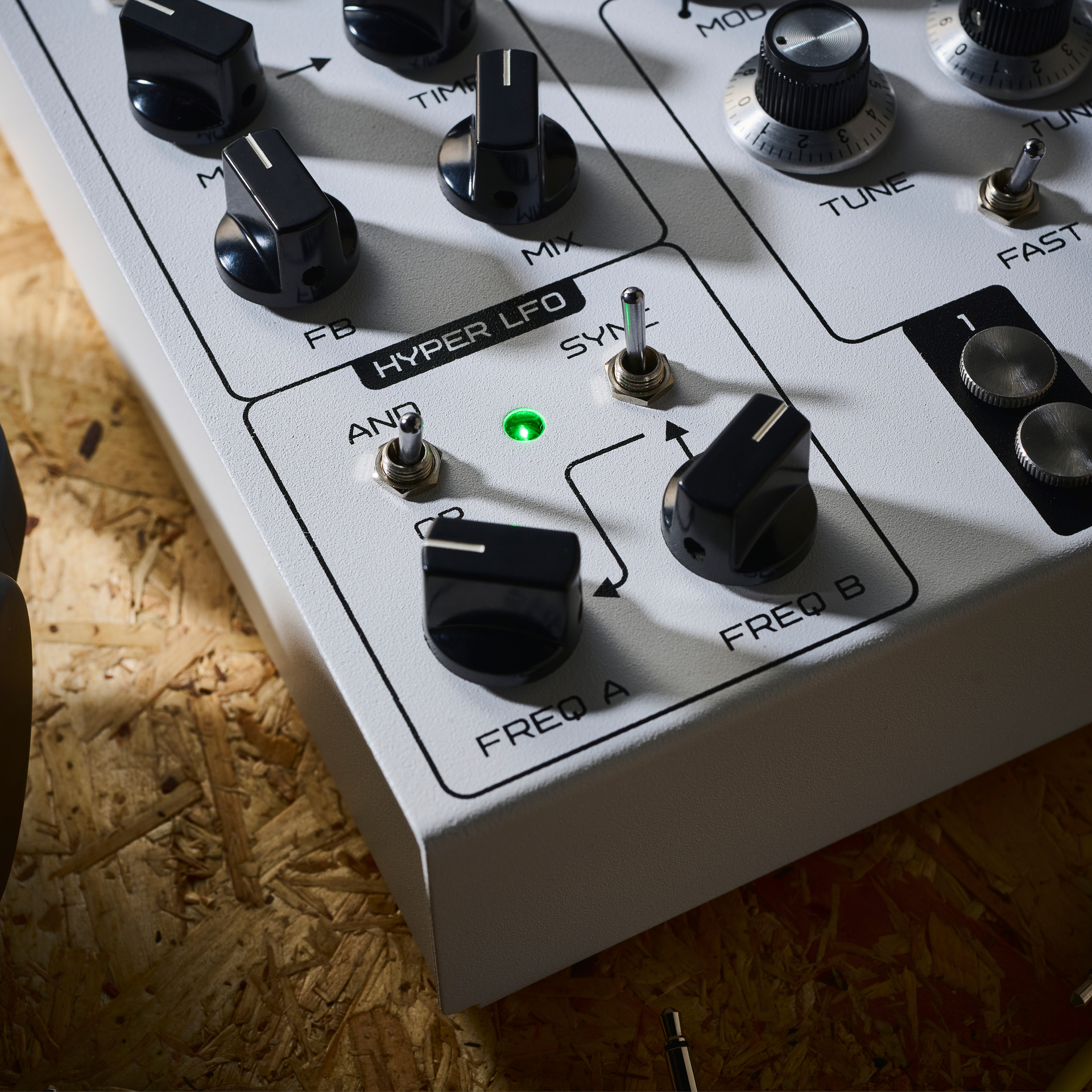
LFO and effects
Like almost everything else about the Lyra-4, the onboard LFO is a little unusual. Dubbed a ‘Hyper LFO’, the module comprises two simple LFOs that combine to generate a complex waveform.
Each LFO is a square wave and has its own rate control. An And/Or switch dictates where the output of these are added together or multiplied. A Sync switch, meanwhile, can engage cross modulation from one simple LFO to the other.
It’s fittingly complex and unpredictable, but works well as an addition to the Lyra design. Routed to modulate the voices with the envelopes set to Fast mod, it can function a little like a rhythmic sequence and create some nice polyrhythmic percussive patterns.
The final elements of the Lyra’s design are its delay and distortion effects. The delay is analogue, and features a modulator for its time parameter. Depending on settings, this can create short, metallic reverbs, vintage chorus effects or spiralling dub delays. Pushing the Feedback control to maximum provides yet another source of wild self-oscillation in the Lyra signal chain.
The delay also features a rear panel CV input for modulating the time, adding another way to incorporate the Lyra into a wider setup.
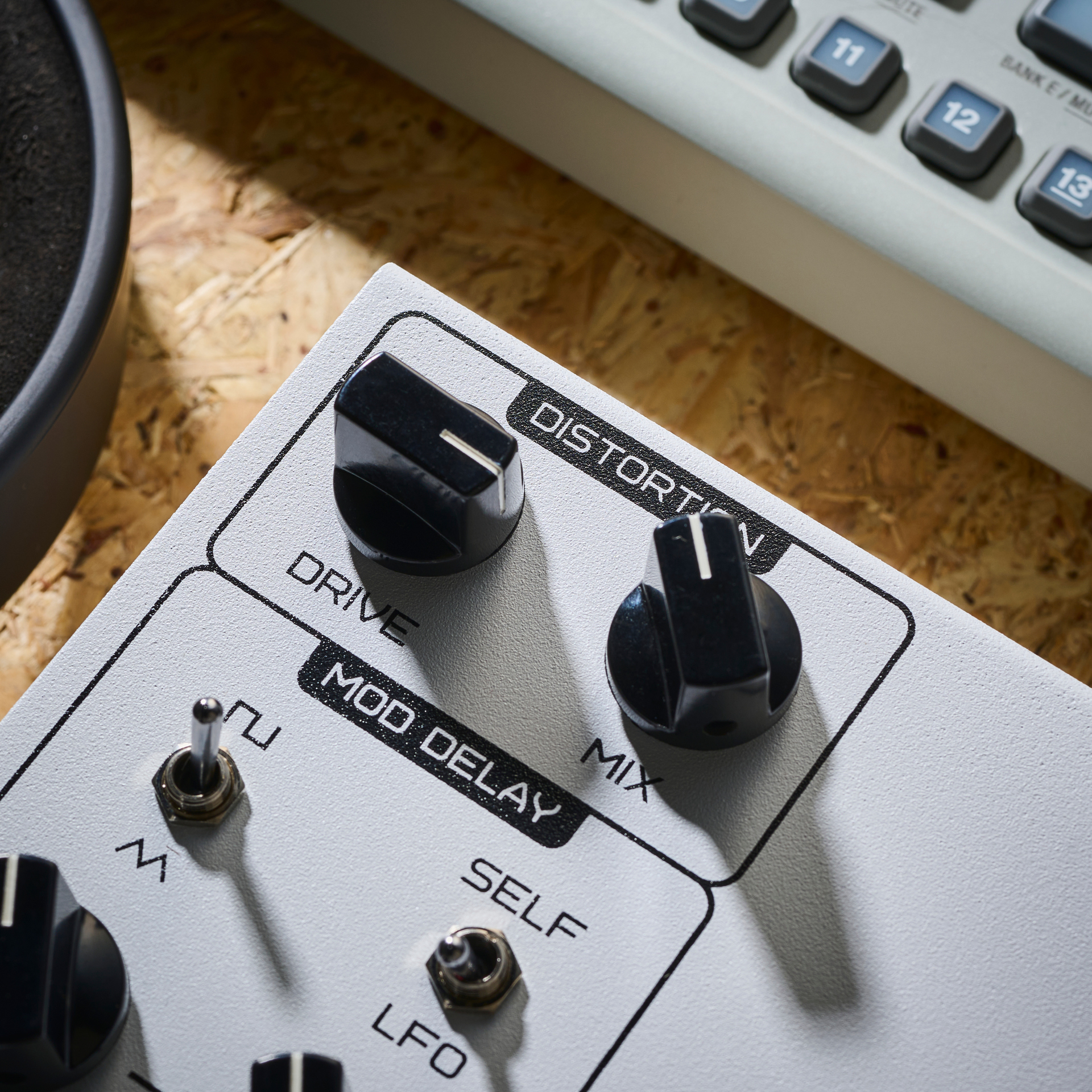
Finally, the analogue distortion offers just drive and mix controls, but is capable of radically reshaping the tone of the overall synth. Push beyond half way, the effect creates rich harmonic saturation that floods the mid-range and really suits the tone of the synth. With the output routed to act as a modulation source, it provides yet another way to alter the harmonic quality of the modulated sound.
With the relaunch of the Lyra-4, Soma is encouraging users to experiment with the idea of running two synths side-by-side. In fact, Lyra-4 is now available in both black and white colour schemes, which can be paired together for a ‘yin-and-yang’ effect.
The company suggests using these in a stereo pairing, with one in the left channel and one in the right. Doing so can create some fascinating stereo signals, particularly when using the synths with Hold raised to create drones. It’s also possible to route the output of one Lyra and use it as a CV input to modulate another.
Soma claims that using two Lyra-4s can be significantly different to using a single Lyra-8 – which is essentially two sets of Lyra-4 in a single box. Personally, I haven’t had a chance to try the two side-by-side, but I’ll take the company’s word for this – it’s not hard to imagine how the addition of extra delay and distortion modules, and two Hyper LFOs, could create an interaction that is substantially different from using everything as a self-contained synth.
Verdict
In all, Lyra-4 is weird, and that’s something you will either love or hate. As an experimental instrument, it’s not the most functional tool in the world – this isn’t something you sit down with in order to generate melodic lines you’ve pre-composed in your head, or quickly rustle up a staple synth patch.
There is nothing quite like Soma’s synth designs, and the compact and lightweight Lyra-4 is by far the most affordable and convenient route into the company’s world of ‘organismic’ designs. If noise and oddball sound design are your thing, this is the type of device you can get lost in for hours on end. Just don’t be surprised if your neighbours aren’t best pleased.
Hands-on demos
SOMA Laboratory
Alternatives
This collaboration with Alessandro Cortini is as much at home producing tones as it is generating control signals and processing external audio. It is a real all-in-one experimental noise station.
The Elmyra 2, while similar in looks, does things a little differently from the Lyra-4. This four-voice digital/analogue hybrid drone machine also invites you to explore a microtonal palette.
Ok, so not exactly on the same esoteric wavelength as the Lyra-4, the Quadrantid Swarm still delivers the same hands-on-at-one-with-the-machine vibe.
Specifications
Key features | Four voice, Hyper LFO, Mod Delay, Distortion |
I/O | Output - 6.3mm TS jack. Headphone output - 3.5mm jack. CV Delay - 6.3mm TS jack. CV Voice - 6.3mm TS jack |
Power supply | Stabilised, +12 V, 0.2 A, centre positive |
Dimensions | 241 х 203 х 62 mm |
Weight | 1.2 kg |
I'm the Managing Editor of Music Technology at MusicRadar and former Editor-in-Chief of Future Music, Computer Music and Electronic Musician. I've been messing around with music tech in various forms for over two decades. I've also spent the last 10 years forgetting how to play guitar. Find me in the chillout room at raves complaining that it's past my bedtime.
You must confirm your public display name before commenting
Please logout and then login again, you will then be prompted to enter your display name.
"I said, “What’s that?” and they said, “It’s what Quincy Jones and Bruce Swedien use on all the Michael Jackson records": Steve Levine reminisces on 50 years in the industry and where it’s heading next
“I used everything I knew about music”: How Green Day exceeded expectations with their most ambitious song
YouTube just added AI tools that makes musicians, library music and video editors redundant
